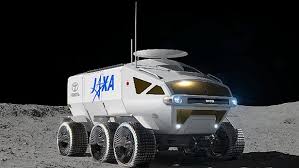
Breaking News
 LIVE ELECTION RESULTS: New York mayor, NJ & VA governor, Prop 50, Trump endorsements, latest vote
LIVE ELECTION RESULTS: New York mayor, NJ & VA governor, Prop 50, Trump endorsements, latest vote
 Sen. Markwayne Mullin Reveals Schumer Held Secret BACKROOM MEETING...
Sen. Markwayne Mullin Reveals Schumer Held Secret BACKROOM MEETING...
 RIP NYC - Muslim Communist Zohran Mamdani Wins New York City Mayoral Race
RIP NYC - Muslim Communist Zohran Mamdani Wins New York City Mayoral Race
 Dramatic Footage Shows UPS Cargo Jet Crashing At Louisville Airport
Dramatic Footage Shows UPS Cargo Jet Crashing At Louisville Airport
Top Tech News
 Japan just injected artificial blood into a human. No blood type needed. No refrigeration.
Japan just injected artificial blood into a human. No blood type needed. No refrigeration.
 The 6 Best LLM Tools To Run Models Locally
The 6 Best LLM Tools To Run Models Locally
 Testing My First Sodium-Ion Solar Battery
Testing My First Sodium-Ion Solar Battery
 A man once paralyzed from the waist down now stands on his own, not with machines or wires,...
A man once paralyzed from the waist down now stands on his own, not with machines or wires,...
 Review: Thumb-sized thermal camera turns your phone into a smart tool
Review: Thumb-sized thermal camera turns your phone into a smart tool
 Army To Bring Nuclear Microreactors To Its Bases By 2028
Army To Bring Nuclear Microreactors To Its Bases By 2028
 Nissan Says It's On Track For Solid-State Batteries That Double EV Range By 2028
Nissan Says It's On Track For Solid-State Batteries That Double EV Range By 2028
 Carbon based computers that run on iron
Carbon based computers that run on iron
 Russia flies strategic cruise missile propelled by a nuclear engine
Russia flies strategic cruise missile propelled by a nuclear engine
 100% Free AC & Heat from SOLAR! Airspool Mini Split AC from Santan Solar | Unboxing & Install
100% Free AC & Heat from SOLAR! Airspool Mini Split AC from Santan Solar | Unboxing & Install
JAXA and Toyota team up on manned Moon rover concept with 10,000-km range

With a range of 10,000 km (6,200 mi), the rover would be about the size of two minibuses and could carry two passengers, or up to four in an emergency.
If the next generation of astronauts to reach the Moon expect to be more than tourists, they are going to need some serious transportation. Though Earth's nearest neighbor may look small as it hangs up in the sky, it's much larger than many people think, with a surface area equivalent to that of Africa. It also has some very rough, mountainous terrain and an environment that is the very definition of hostile.
All of this would be bad enough on Earth, but on the Moon any visitor has to move about in a pressure suit that makes even the simplest of tasks as difficult as deep sea diving in mixed-gas gear, and in which only the shortest of hikes is practical.
It's for this reason that the later Apollo missions included a two-man electric go-kart to carry the astronauts and their gear. It's also the reason why JAXA and Toyota are keen on the idea of a pressurized rover where explorers can work in a shirt sleeve environment and travel for thousands of miles at a go.



